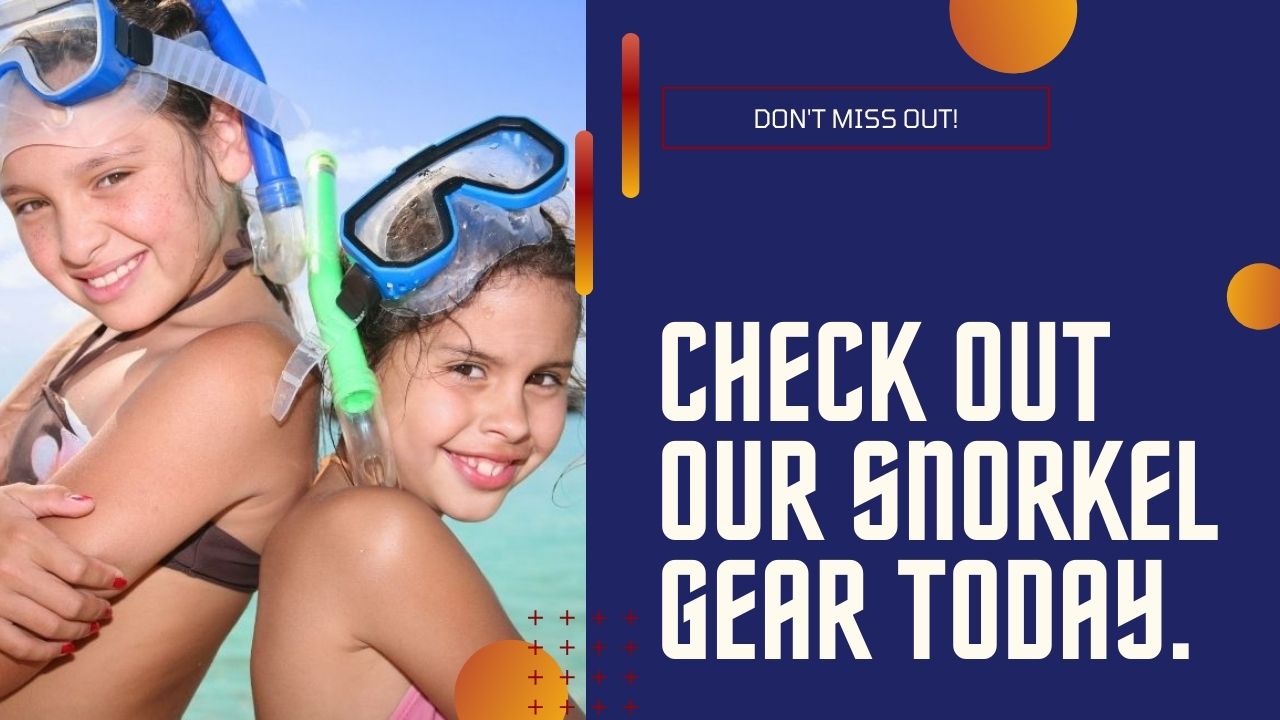You have 0 product(s) in your cart.
Abyss Scuba Diving
How To Go Snorkeling Like A Pro In 2024
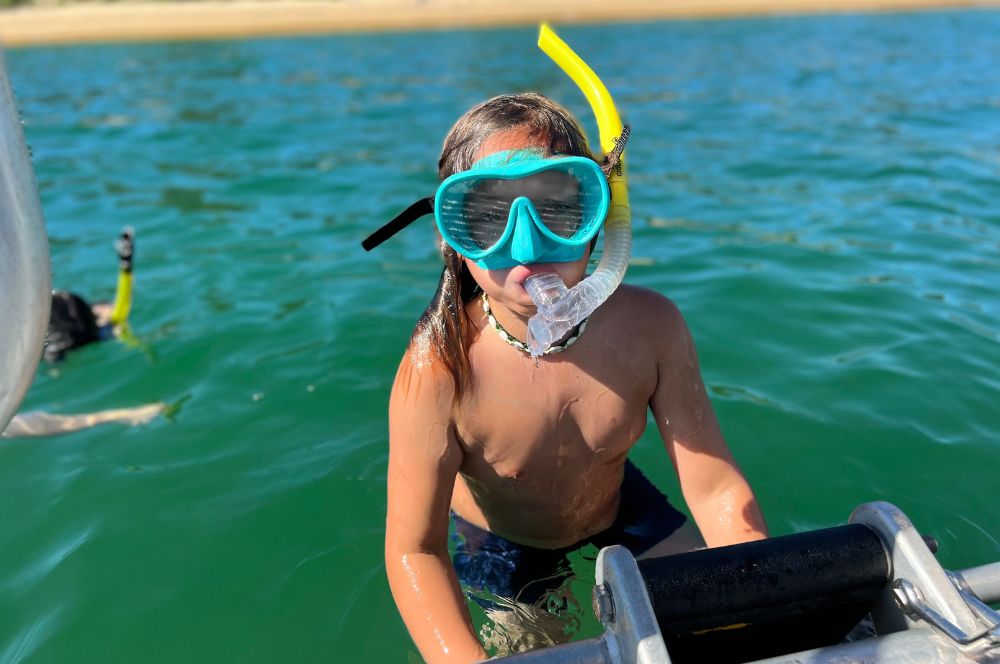
How to Snorkel Like a Pro in 2024 - A Complete Snorkeling Guide
Imagine exploring a vibrant, colourful underwater world teeming with fascinating marine life and dazzling coral reefs. Snorkelling offers snorkelers an opportunity to do just that, providing amazing experiences at various locations known for their natural beauty and educational value. In this comprehensive guide, we’ll share tips and techniques to help you snorkel like a pro so you can confidently dive in and experience the wonders of the ocean.
Whether you’re a complete beginner or an experienced snorkeler looking to up your game, we’ve got you covered. We’ll cover essential snorkelling gear, mastering snorkelling techniques, safety tips, advanced snorkelling techniques, top destinations for snorkelers, and how to prepare for your snorkelling adventure. Get ready to be immersed in the enchanting world of snorkelling!
Key Takeaways
-
Gear up for a thrilling snorkelling experience with essential gear and the right techniques!
-
Respect marine life and coral reefs while mastering advanced skills like breath-hold diving to explore the depths of the ocean.
-
Prepare your physical fitness and swimming skills & pack essentials for an unforgettable adventure at top snorkelling destinations worldwide!
Essential Snorkeling Gear for Snorkelers: Snorkeling Vest
The right snorkel gear significantly contributes to a safe and enjoyable snorkelling experience. The essential pieces of snorkelling gear include a mask, snorkel, and fins. Having the right snorkelling equipment is crucial for a safe and enjoyable experience.
We will delve deeper into each piece of gear in the next sections, allowing you to make educated decisions for an optimal underwater adventure. Additionally, using a snorkeling vest can impact your movement in the water, so it's important to consider your swimming skills for safety and freedom of movement.
Choosing the Right Snorkel Mask
Selecting the perfect snorkel mask is key for comfort, fit, and visibility. There are two main types of snorkel masks: traditional and full-face snorkel masks. Traditional snorkel masks are the classic choice, retaining relatively little air and creating less buoyancy, which makes diving underwater easier. On the other hand, full-face snorkel masks provide a wider field of view and enhanced comfort for those who prefer snorkelling on the surface.
Full-face masks, on the other hand, cover your entire face and can make diving more challenging. When fitting a full-face snorkel mask, securing a proper seal around your face is of utmost importance. Here's how to do it:
-
Press the mask onto your face without using the strap.
-
Inhale through your nose.
-
If the mask stays in place without any air leakage, you've found a good fit!
-
Adjust the head strap accordingly, making sure not to overtighten it, as this can affect the mask seal.
Bear in mind that a well-fitted mask is the cornerstone of a safe and enjoyable snorkelling experience.
Types of Snorkels: Wet, Semi-Dry, and Dry
There are three main types of snorkels:
-
Wet snorkels: These are the original, simple J-shaped tubes with a mouthpiece.
-
Semi-dry snorkels: These offer more versatility, with a splash guard at the top to keep water out and a purge valve at the bottom to clear any water that enters the tube.
-
Dry snorkels: These have a special valve at the top that seals when submerged, preventing water from entering the tube.
For beginners, a dry snorkel is recommended semi dry snorkel only, as it provides the most protection against water entering the tube. Experienced snorkelers may prefer wet snorkels due to their simple design. Furthermore, they have zero buoyancy when diving underwater..
Ultimately, the choice of snorkel depends on your skill level, personal preference, and snorkelling conditions.
Importance of Fins for Efficient Snorkeling
While not essential, fins are incredibly beneficial for efficient and effortless snorkelling. They enable you to reach the target depth quickly. You can spend more time there and ascend to the surface efficiently. A good snorkelling fin should provide maximum mobility and control, a comfortable and secure fit, lightweight materials, durable construction, adjustable straps, and be specifically designed for snorkelling.
When choosing fins, consider your skill level and the type of snorkelling you'll be doing. Shorter fins are easier to maneuver and require less effort, making them suitable for beginners. Longer fins provide more propulsion, making them ideal for experienced snorkelers or those who plan to cover greater distances.
Keep in mind, that the right fins selection can significantly improve your snorkelling experience.
Mastering Snorkeling Techniques
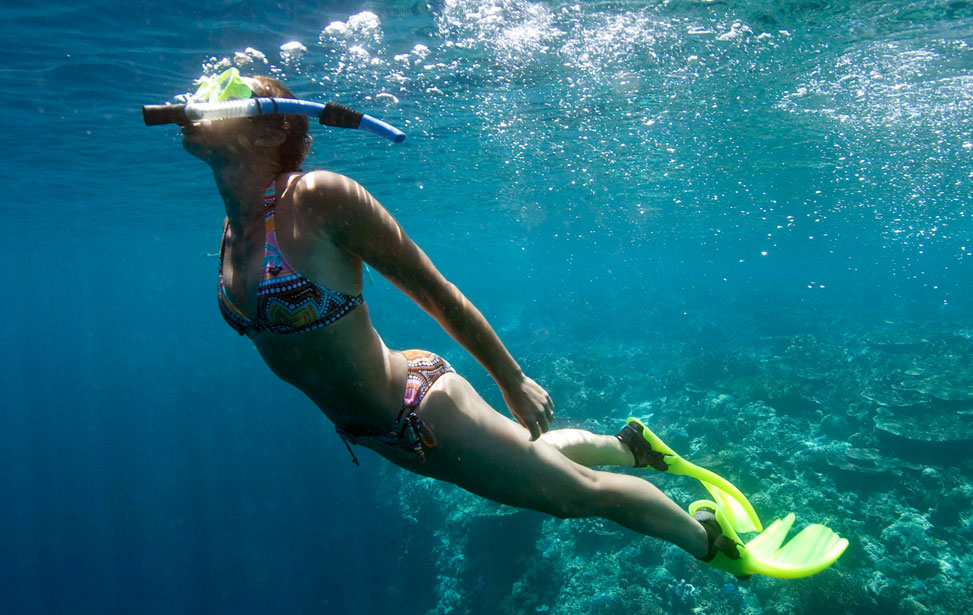
Having covered the essential gear, we can now shift focus to mastering snorkelling techniques. Proper breathing, clearing water from your snorkel and mask, and conserving energy and air are all crucial skills to ensure you have a safe and enjoyable snorkel underwater experience.
Proper Breathing While Snorkeling
Proper breathing during snorkelling is vital for both safety and comfort. Here are some snorkeling tips to follow:
-
Breathe deeply and slowly through your mouth using the snorkel tube.
-
Make sure to exhale fully to exchange the air in the tube.
-
This helps to prevent carbon dioxide buildup and ensures you are getting enough oxygen.
Focusing on your breathing can also help you relax and conserve energy. When you're calm and breathing deeply, you use less energy and can snorkel for longer periods of time. Remember, a relaxed snorkeler is a happy snorkeler!
Clearing Water from Your Snorkel and Mask
Keeping your snorkel and mask clear of water is vital for ensuring visibility and comfort during your underwater exploration. To clear water from your snorkel, forcefully blow air out through your mouth to blast out the water. To clear water from your mask, tilt your head back slightly, look up, hold your breath, and exhale through your nose.
Mastering these techniques will help you quickly and effectively clear water from your gear, ensuring you can focus on the incredible underwater world around you. Practice these skills in shallow water or a swimming pool before venturing out into deeper areas.
Conserving Energy and Air
Energy and air conservation is a crucial aspect of snorkelling that allows you to fully relish the experience without exhausting yourself. Swim slowly and steadily, and use your fins to help you move efficiently. Be mindful of your kick, focusing on smooth, controlled movements to conserve energy.
Taking breaks when needed is also crucial, as snorkelling trips can be all-day events with hours spent in the water. Remember, the goal is to enjoy mesmerizing marine life and breathtaking coral reefs, so take your time and savour every moment.
Snorkeling Safety Tips
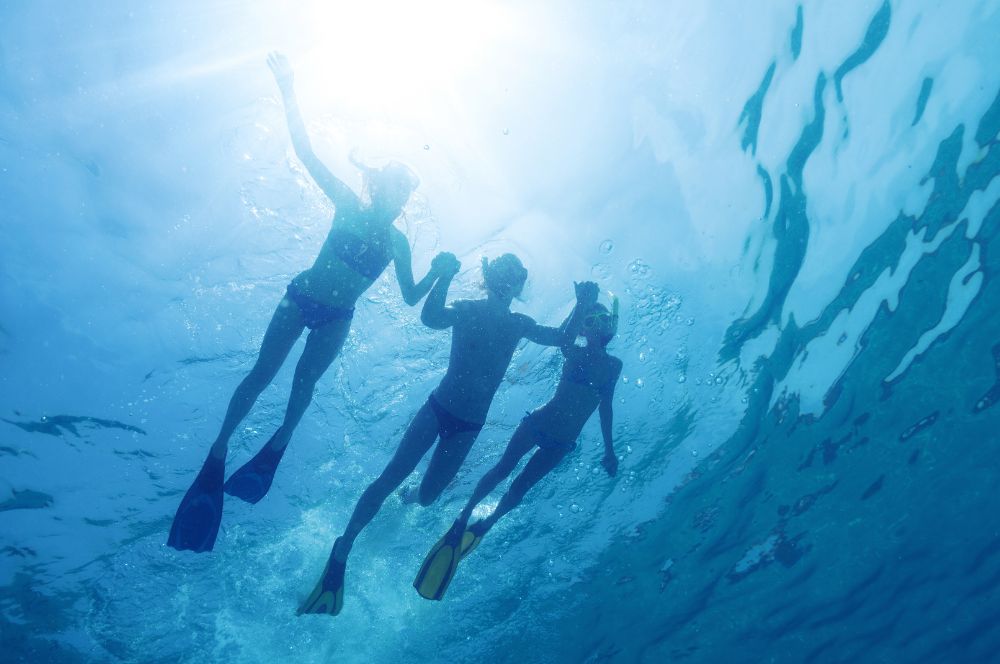
Safety should always be a top priority when snorkelling, as it ensures a fun and enjoyable experience for everyone. Joining snorkel tours led by experienced guides can provide a safer experience and valuable education about marine life and ecosystems.
Up next, we will touch on vital safety tips, such as employing the buddy system, monitoring weather and ocean conditions, and respecting marine life and coral reefs.
Buddy System and Communication
Pairing up with a buddy while snorkelling is critical for both safety and communication. Having someone with you in the water can provide assistance in case of an emergency, and it's simply more enjoyable to share the experience with a friend. Make sure to establish clear communication methods, such as:
-
Using hand signals like the OK sign
-
Pointing in a direction
-
Waving your hand back and forth to get your buddy's attention or convey messages underwater.
Always stay within sight of your buddy and frequently check on each other to ensure both of you are safe and comfortable. Remember, snorkelling is a social activity, so enjoy the adventure together!
Monitoring Weather and Ocean Conditions
Monitoring weather and ocean conditions is vital for ensuring a safe snorkelling experience. Check weather forecasts and ocean conditions before heading out to snorkel, paying attention to wind speed, wave height, and water temperature. Be aware of potential hazards, such as strong currents or dangerous marine life, and adjust your snorkelling plans accordingly.
If conditions are not ideal, it's better to reschedule your snorkelling adventure than to take unnecessary risks. Remember, your safety and enjoyment are the top priorities.
Respecting Marine Life and Coral Reefs
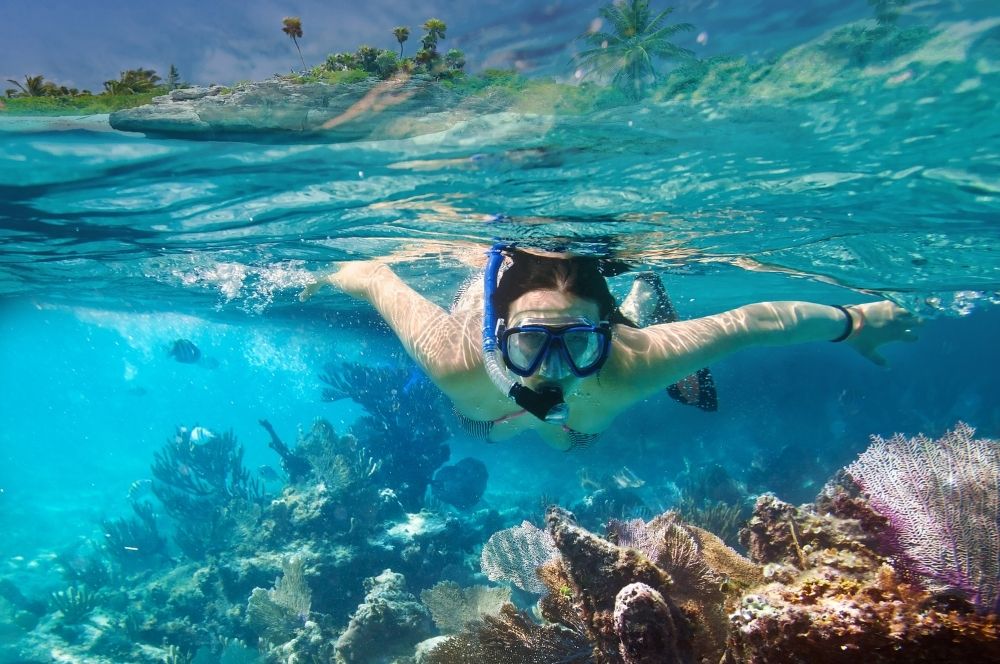
Respecting the delicate marine life and coral reefs while snorkelling is crucial to preserving the enchanting underwater world. Touching or disturbing them can cause harm and disrupt their natural habitats. Be mindful of your fins and other equipment, as they can cause damage to coral reefs.
Avoid standing on coral reefs or other marine life, and do not feed the fish or other animals. By respecting the environment, you're not only protecting the ocean's inhabitants but also ensuring that future generations can enjoy the wonders of sea life and snorkelling.
Advanced Snorkeling Techniques
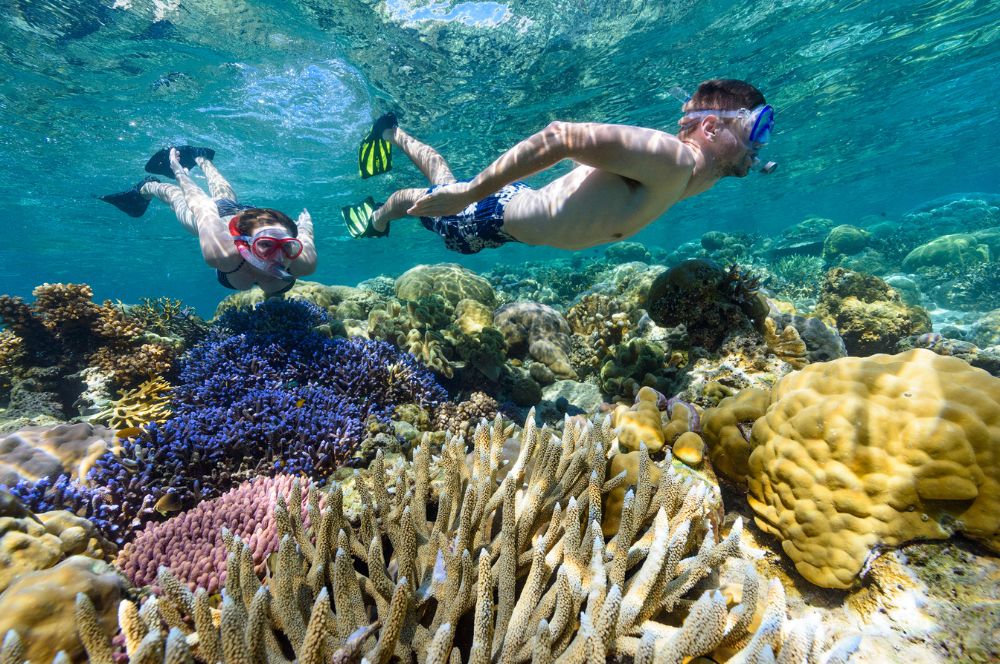
For more experienced snorkelers and scuba divers looking to take their underwater adventures to the next level, advanced techniques such as breath-hold diving, equalizing ear pressure, and snorkelling in currents and waves can enhance your scuba diving and snorkelling experience.
We will explore each of these techniques in-depth and guide you on how to master them.
Breath-hold Diving
Breath-hold diving is an exciting technique that allows you to explore deeper underwater areas without scuba gear. To master breath-hold diving, practice proper breathing techniques, such as exhaling completely before diving and inhaling slowly and deeply. Additionally, practice equalizing your ears to prevent barotrauma.
By increasing your breath-holding capacity, you can dive underwater and immerse yourself even deeper in the underwater world, getting closer to coral reefs and marine life, almost as if you could breathe underwater. Just remember to always dive with a buddy and be aware of your surroundings for safety.
Equalizing Ear Pressure
Equalizing ear pressure is an essential technique to prevent discomfort and pain in your ears while diving. There are several methods for equalizing ear pressure, such as:
-
The Valsalva maneuver, which involves pinching your nose and blowing gently
-
The Toynbee maneuver, which involves swallowing or yawning
-
The Frenzel maneuver
-
The Edmonds maneuver
Practice these techniques and find the one that works best for you. Properly equalizing your ear pressure will ensure a more comfortable and enjoyable snorkelling experience.
Snorkeling in Currents and Waves
Snorkelling in currents and waves can be challenging but also exhilarating. To safely snorkel in these conditions, employ strategies such as swimming parallel to the shore, using fins for propulsion, and using a floatation device to help with buoyancy. Be aware of the ocean conditions and take breaks when needed.
Snorkelling in currents and waves can provide a whole new level of excitement and adventure. Just remember to always prioritize safety and stay within your comfort zone.
Top Snorkeling Destinations: Great Barrier Reef
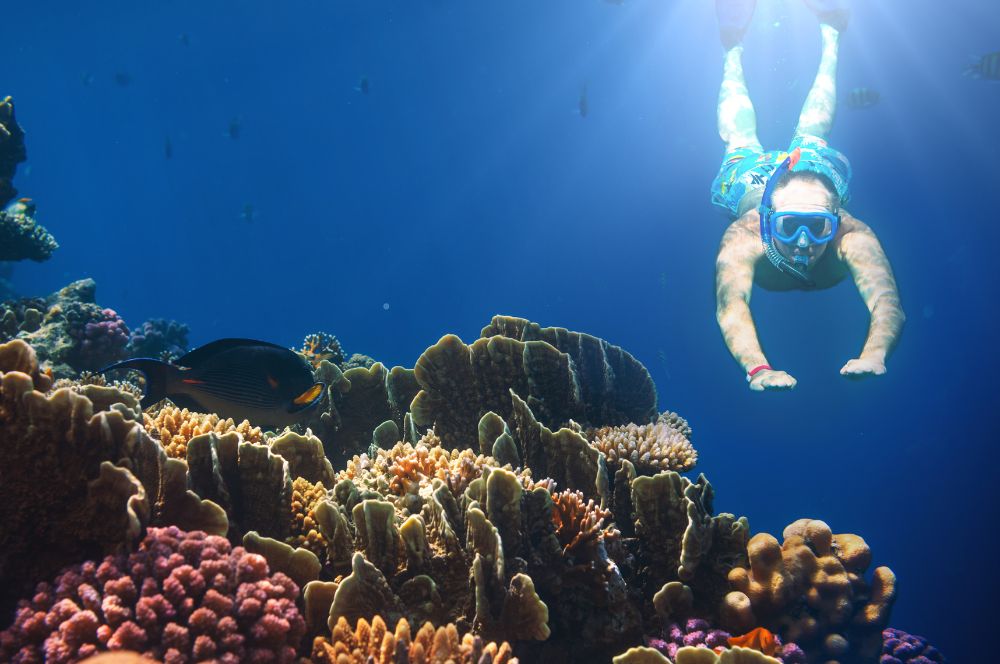
If you’re eager to explore some of the world’s most breathtaking underwater destinations, here’s a list of top snorkelling spots to consider:
-
Dean’s Blue Hole in the Bahamas
-
Norman Reef on the Great Barrier Reef, Australia
-
The Galapagos Islands, with their incredible biodiversity
-
Mudslide Reef in the Grand Cayman Islands
-
The USAT Liberty wreck in Tulamben, Bali
-
The Ras Mohammed National Marine Park in Egypt
For our friends in the Southern Hemisphere, particularly in Australia, you’re in luck! The Great Barrier Reef, right at your doorstep, offers a diverse marine life, including sea turtles, and the Whitsunday Islands are home to some of the world’s most beautiful coral reefs. Not only that, but you also have easy access to some of the Pacific’s snorkelling jewels. Fiji, with its crystal clear waters and vibrant corals, is a paradise for snorkelers. And let’s not forget Vanuatu’s Hideaway Island, renowned for its marine sanctuary full of tropical fish and stunning coral formations. These destinations are a snorkeler’s dream come true!
Additionally, the Eyre Peninsula offers unique snorkeling opportunities where you can swim with Australian Sea Lions. The Indian Ocean, particularly at Ningaloo Marine Park, showcases a rich diversity of marine life, including 50% of the coral species found in the Indian Ocean. Ningaloo Marine Park is also a prime location for snorkeling with Humpback Whales and Whale Sharks. Upon reaching the outer reef, you can obtain snorkeling equipment and receive tips to fully enjoy the experience. Popular locations like Ningaloo Marine Park and the Great Barrier Reef offer the chance to snorkel with whale sharks, making them must-visit destinations for marine enthusiasts.
These destinations offer a unique and unforgettable snorkelling experience, teeming with vibrant marine life and stunning underwater landscapes. No matter where you choose to snorkel, always keep safety in mind and embrace the adventure.
Preparing for Your Snorkeling Adventure
Proper preparation before embarking on your snorkelling journey is crucial to ensure an enjoyable and safe snorkeling experience.
Next, we will address improving your physical fitness and swimming skills and packing all the necessary snorkelling gear for your adventure.
Physical Fitness and Swimming Skills
Enhancing your physical fitness and swimming skills significantly contributes to a successful snorkelling experience. Practice swimming regularly, focusing on the freestyle technique to build your endurance and confidence in the water. Work on your breathing techniques, and consider taking swimming lessons if you're not a strong swimmer.
By enhancing your physical fitness and swimming skills, you'll not only ensure your safety but also maximize the enjoyment of your snorkelling adventure. After all, the better you can swim, the more you can explore the underwater world.
Packing Essentials
Packing the right snorkelling gear when preparing for your snorkelling adventure is crucial for a safe and enjoyable experience. Some essentials to include in your packing list are:
-
Snorkeling mask
-
Snorkel
-
Fins
-
Swimwear
-
Rash guard
-
Sunscreen
-
Snorkeling bag
By packing all the necessary items and following these tips, you'll be well-prepared for a fantastic snorkelling adventure. Remember, proper preparation is the key to an amazing and unforgettable underwater experience.
Summary
Snorkelling is an incredible way to explore the mesmerizing underwater world, offering both beginners and experienced snorkelers a unique and unforgettable experience. By mastering essential snorkelling techniques, investing in the right gear, and prioritizing safety, you'll be well on your way to snorkelling like a pro.
So gear up, dive in, and immerse yourself in the breathtaking world beneath the water's surface. The ocean is waiting for you to uncover its hidden treasures and captivating wonders.
Frequently Asked Questions
What do snorkelers do?
Snorkelers use a snorkel mask to explore the underwater world, breathing air from above the surface with their head face downwards and eyes and nose submerged. They can enjoy beautiful coral reefs and marine life without having to come up for air.
What type of snorkel is best for beginners?
For beginner snorkelers, a full-face mask is a great option that is easy to use and still allows you to breathe for natural breathing through your nose. The integrated snorkel design also makes it a convenient choice.
How do you breathe underwater with a snorkel?
You can breathe underwater with a snorkel by attaching a flexible tube to a mask that covers your eyes and nose. When you dive, you need to keep the top of the breathing tube above the surface of the water to allow air exchange, but be careful when doing flip turns so that you don't let in any water. Once you resurface, you must exhale hard to expel any water in the tube before taking your next breath.
What are the essential pieces of gear for snorkelling?
Gear up and get ready for your next snorkelling adventure with a mask, snorkel, and fins!
How can I improve my breathing techniques while snorkelling?
Focus on taking deep, even breaths into your stomach instead of your chest to improve your breathing technique while snorkelling!
RELATED POSTS
-
Discovering the Best Snorkelling Spots…
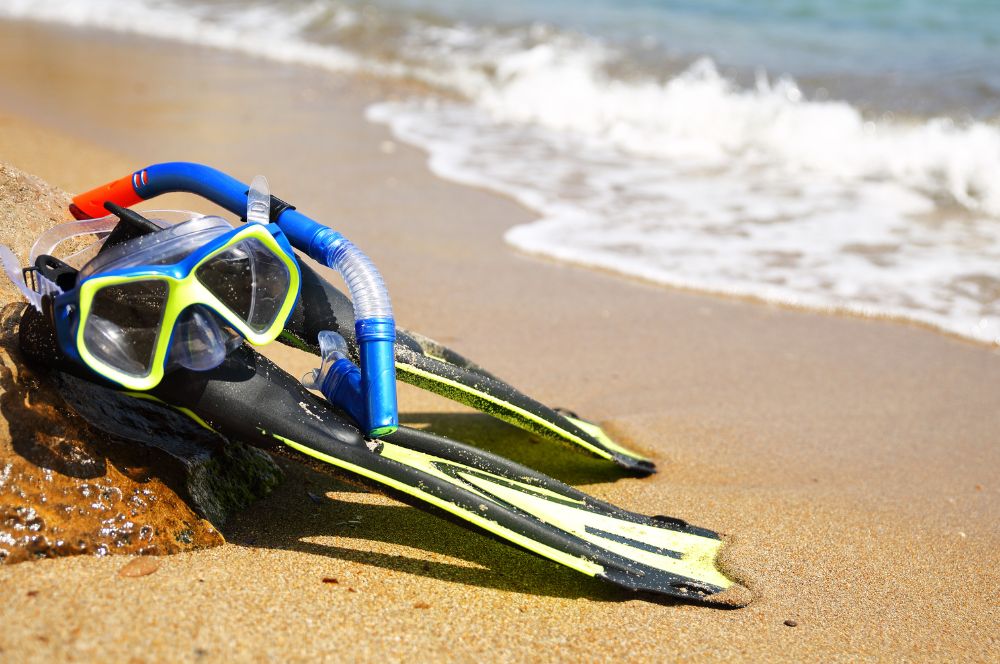
Discovering the Best…
Discovering the Best Snorkelling Spots in Sydney: Exploring Marine Life, Sharks, and More! Sydney is renowned […] -
Sydney Snorkeling
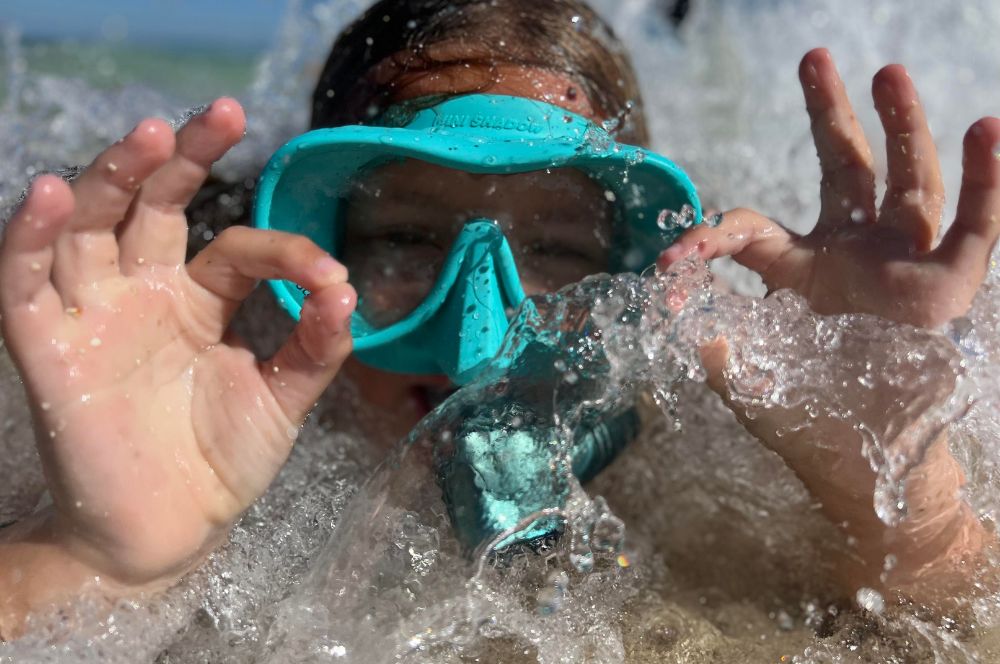
Sydney Snorkeling
Sydney Snorkeling Sydney is graced with an abundance of stunning locations to go snorkeling. Your children […] -
Why a Snorkelling Set is the Perfect…
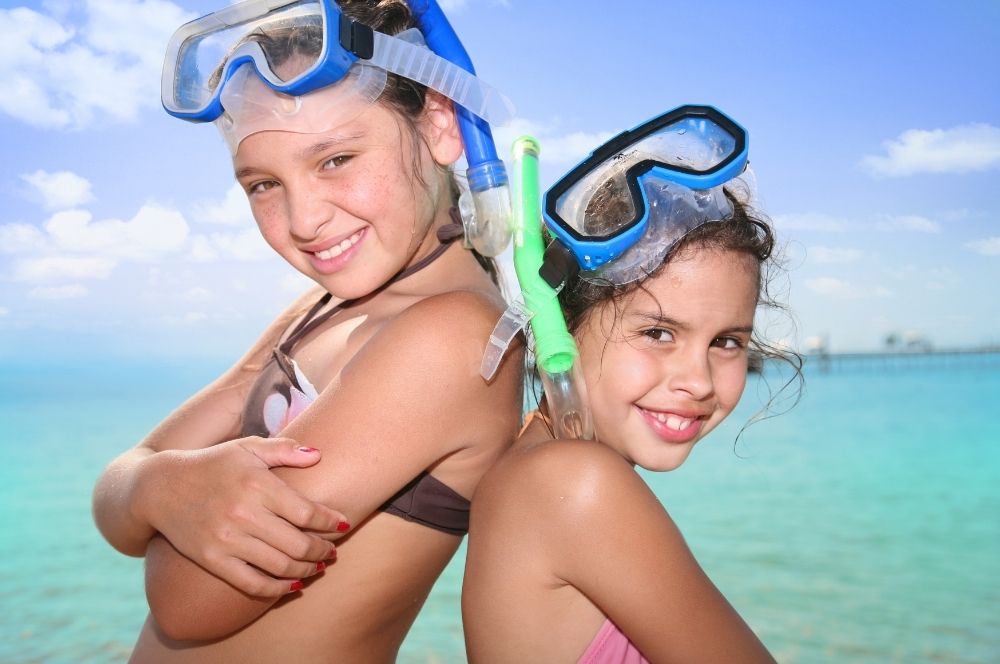
Why a Snorkelling Set…
Why a Snorkelling Set is the Perfect Gift for an 8 Year Old’s Birthday An 8th Birthday is an exciting […] -
What gear do I need to enjoy snorkelling…
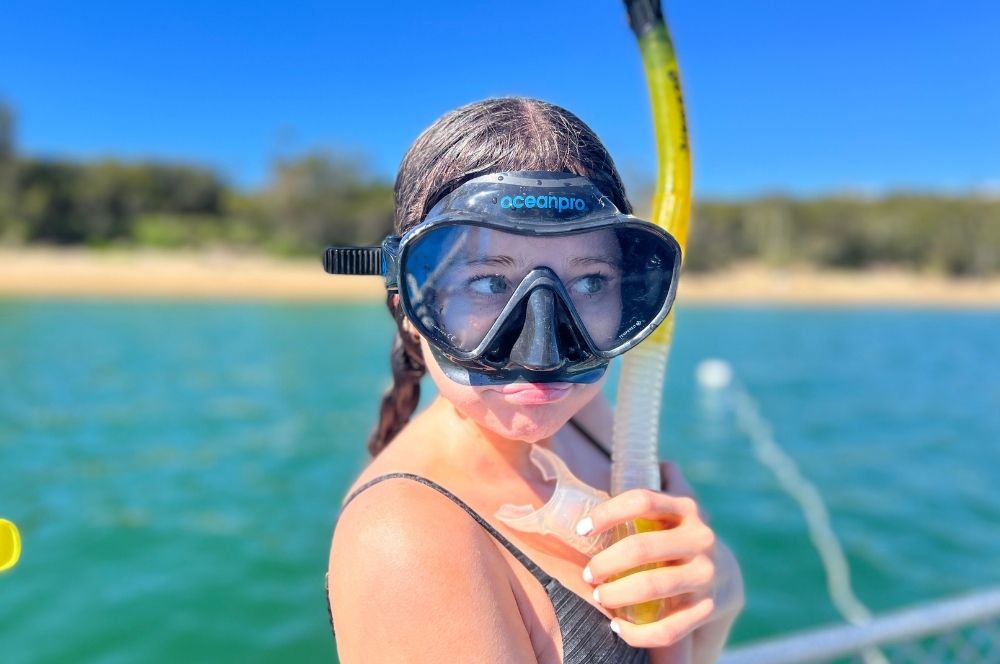
What gear do I need…
What Gear Do I Need to Enjoy Snorkelling in the Tropics? If you live in Sydney and are heading off to Fiji […]
Recent Posts
